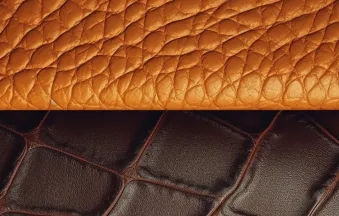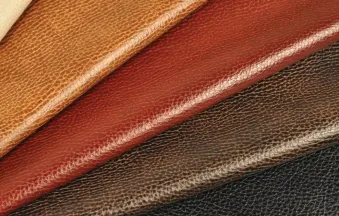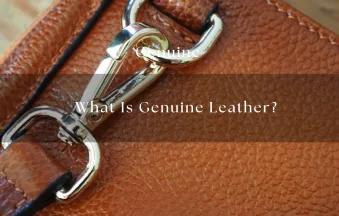Best Vegan Leather In 2025
Vegan leather, also known as faux leather, is a popular alternative to traditional leather made from animal hides. With the rising demand for cruelty-free and eco-friendly products, vegan leather has become a widely sought-after material for fashion, furniture, accessories, and more.
Unlike animal leather, which is made by tanning the hides of cows, pigs, or other animals, vegan leather is created using synthetic or plant-based materials. This article will dive into the various methods of making vegan leather, the types of materials used, and its benefits and drawbacks.
Table of Contents
ToggleThe Evolution of Vegan Leather
The concept of animal-free leather has been around for decades, but its popularity surged in the 21st century as more consumers began to embrace sustainability and cruelty-free practices. Early versions were often made from PVC (polyvinyl chloride), a plastic-based material, but growing concerns about the environmental impact of PVC led to the development of newer, more eco-friendly alternatives.
Today, synthetic leather is made from a wide range of materials, from synthetic polymers to natural plant-based substances. With continuous advancements in material science and green technology, the production of these leather alternatives has evolved to closely mimic the look, feel, and durability of genuine animal leather.
Types of Vegan Leather
Vegan leather can be divided into two broad categories: synthetic and plant based. Each type of vegan leather has its own unique characteristics, applications, and environmental impact.
1. Synthetic Vegan Leather
Synthetic vegan leather is made from petroleum-based plastics, most commonly polyurethane (PU) or PVC. These materials are designed to mimic the appearance of animal leather while being cruelty-free.
2. Plant-Based Vegan Leather
Plant-based vegan leather is made from natural, renewable resources such as fruits, vegetables, and fungi. These materials provide a more sustainable alternative to synthetic options and often have a lower environmental impact.
The Production Process of Vegan Leather
The process of making cruelty-free leather alternatives depends on the type of material being used but generally follows a similar pattern. Here is a breakdown of the steps involved in producing synthetic and plant-based leather:
Step 1: Material Selection
The first step in production is choosing the base material. For artificial leather, this typically involves selecting a fabric such as polyester or cotton to use as the backing. For eco-friendly leather options, natural fibers or plant waste products are chosen.
Step 2: Preparation of the Base Material
For synthetic leather, the chosen fabric is prepared by cleaning and smoothing the surface. Plant-derived materials such as pineapple leaves or cork bark are also processed to remove impurities and create a suitable texture.
Step 3: Coating or Growing the Material
In faux leather production, a layer of polyurethane (PU) or PVC is applied to the base fabric using methods like spraying, dipping, or rolling. In the case of bio-based leathers like Piñatex or mycelium leather, the material is grown or woven into a sheet that closely resembles animal leather.
Step 4: Texturizing and Coloring
Once the base material is ready, it is embossed to give it a leather-like texture. This step often includes applying grain patterns that mimic natural leather. The material is then dyed to achieve the desired color and finish.
Step 5: Curing or Drying
The material is then cured or dried to set its shape and improve durability. For synthetic versions, this hardens the plastic coating, while plant-based leather is dried to improve flexibility and moisture resistance.
Step 6: Finishing Touches
In the final step, protective coatings are applied to enhance durability and appearance. The finished product is then cut and shaped for use in fashion, upholstery, accessories, and other leather goods.
Benefits of Vegan Leather
Cruelty-Free: The most significant advantage of plant-based leather alternatives is that they are completely cruelty-free. No animals are harmed in their production, making them an ethical choice for conscious consumers seeking animal-free materials.
Eco-Friendly: Especially in the case of bio-based leather, these materials can be more environmentally friendly than traditional leather. They often use renewable resources and can be biodegradable, reducing environmental impact.
Variety and Versatility: These faux leather options come in a wide range of textures, colors, and finishes, offering consumers plenty of design flexibility. They are suitable for a variety of products, including handbags, shoes, furniture, and automotive interiors.
Durability: High-quality synthetic leather materials can be just as durable and long-lasting as genuine leather. Some types, such as Pinnate and cork leather, are especially resilient and can withstand wear and tear over time.
Final Thoughts
Vegan leather has come a long way in recent years, offering a sustainable and cruelty-free alternative to traditional animal leather. With a variety of materials available, from synthetic polyurethane to innovative plant-based options like mushroom leather and cork leather, vegan leather gives consumers the opportunity to make eco-conscious choices without sacrificing style or functionality.
As demand for sustainable products continues to grow, we can expect further advancements in the development of vegan leather that are both more environmentally friendly and affordable.

















